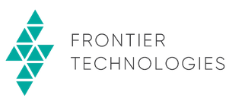Oxygen Mapping in Africa
As part of our work we are supporting the UCL-Ventura CPAP, a life-saving device which delivers pressurised oxygen to the lungs of COVID-19 patients. It was developed by a team of engineers at UCL Institute of Healthcare Engineering, UCL Mechanical Engineering and Mercedes-AMG High Performance Powertrains (Formula 1) with critical care consultants at University College London Hospital (UCLH). To contribute to the global humanitarian effort, the consortium released full details of the CPAP designs and manufacturing instructions at no cost to governments, industry manufacturers, academics and health experts across the globe, with the goal of enabling local manufacture. These blueprints have been downloaded by more than 1,950 teams from 105 countries around the world. Significantly, there have been fewer downloads of designs in Africa and less progress with in-country CPAP manufacture in African countries (although it is in use in hospitals in Uganda following work with the International Medical Education Trust 2000, and also in use in South Africa). An understanding of local supply chains, including availability of suitable piped oxygen supplies required to use CPAPs and manufacturing capability, would enable more focused support and development. So we undertook a project to scan and map current medical oxygen system efficiency (the availability of suitable supplies) in Africa based on existing data sources. Our other mapping work will also help to connect local manufacturing and clinical teams.
What we did
Given our limited resources, our plan had been to collate and map existing data on oxygen supplies in Africa. We quickly discovered that only very limited data actually exists, or is documented and available in the public domain. We were able to source limited existing information about oxygen manufacturers/distributors in a number of Africa countries: city location of the companies and whether they supplied liquid or gaseous oxygen, but more comprehensive data needs to be sourced. We developed a process and structure for doing this, which we trialled. The data we collected has been mapped, together with the existing data, to give 103 data points across Africa, though not in all countries. You can see our map below.
The challenge
Medical oxygen actually needs a whole system to reach patients. An oxygen source alone is not enough. There is also a need for mechanisms and resources for distribution, regulation and conditioning, delivery, patient monitoring, power supply and maintenance. So to support the production and use of devices such as the UCL-Ventura CPAP, there is a need to map all the various dimensions of oxygen systems, not just the oxygen itself. However, as for the actual oxygen, the necessary data about oxygen systems characteristics in African countries are not available to simply collect and map. This data needs to be generated. This is a very significant undertaking, not to be underestimated.
Comprehensive oxygen system mapping is beyond the scale of our project resources. We found it extremely challenging even to collect good quality basic data on oxygen supplies: the data collected was often partial and fragmented, with crucial details missing. Our experience underscores that mapping oxygen supply and oxygen systems is a very ambitious endeavour that will take a significant investment of time and other resources, even just within the continent of Africa.
Where to next?
There are a number of initiatives underway which need to be co-ordinated and funded on a global scale. WHO have proposed a project to co-ordinate worldwide oxygen systems mapping (WHO session: “Technical consultation on oxygen scale-up” led by Janet Diaz, Lead Clinical Management for COVID19, November 2020 https://cdn.who.int/media/docs/default-source/oxygen-scale-up-initiative/o2-scale-up-tech-group_session-4_final.pdf?sfvrsn=5a09af29_5&download=true ). There is no publicly available information about the current status of this initiative, but certainly the scale, scope and ambition of the challenge does suggest the need for funding and co-ordination through a single organisation with global reach.
Map showing location of oxgen manufacturers/distributors in African countries
Please note that this data was supplied by third parties and we can't guarantee it's accuracy. Locations shown on our maps are approximate. The mapping system we use shows a location which is at a random point within a 10k radius of the actual location. This means the actual location of an oxygen plant may not be the location shown, however, the actual location should be within 10K of the location shown. We cannot be held accountable for the accuracy of locations shown.
Insights
The insights below will be updated as you search and filter the map
Loading...



